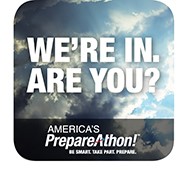National Preparedness Month
Posted on byThroughout September, CDC and more than 3000 organizations—national, regional, and local governments, as well as private and public organizations—will support emergency preparedness efforts and encourage Americans to take action. For Preparedness Month 2016, CDC’s Office of Public Health Preparedness and Response (OPHPR) and National Center for Environmental Health plan to release blog posts, social media messages, a Twitter Chat, graphics, and more. Throughout the month, CDC will focus on the following areas:
Prepare globally. Diseases know no borders, which is why we need to work together to stop epidemics early and close to the source. Partners around the world are combining efforts to prevent, detect, and quickly respond to public health emergencies of international concern.
Prepare to respond. A cornerstone of response, Emergency Operations Centers are where highly trained experts monitor information, prepare for known (and unknown) public health events, and gather to exchange information and make decisions in an emergency. No matter the size of a country’s EOC or the equipment they have available, trained experts who know what to do are the key to responding effectively and saving lives.
Prepare locally. In the U.S., state and local health departments play a critical role in keeping people safe from public health threats. Making information about radiation emergencies available to community partners and the public will help enhance community preparedness in case of an event. Prepare together. Research shows that close-knit neighborhoods are more resilient during a disaster. We can all volunteer to help our communities prepare and respond before, during, and after an emergency. The first people who respond to an emergency don’t have to wear a uniform or have a vehicle with a siren, but they all share one quality—they want to help others who are in trouble.
Prepare yourself. One way you can prepare for emergencies is by having a kit ready to keep your family safe and healthy. It is important to have different types of kits for a variety of emergency situations: a kit for your home if you have to shelter in place, a kit with supplies for your car in case you have to evacuate, and a first aid kit in case someone is injured.
PrepareAthon
Also in September, all federal agencies will come together to promote the fall PrepareAthon. The PrepareAthon is a nationwide, community-based campaign for action to increase emergency preparedness and resilience through hazard-specific drills, group discussions and national level exercises conducted each fall and spring. The month will culminate in the National Day of Action on September 30.
PrepareAthon messages will focus on specific hazards this fall: winter weather, earthquakes, hurricanes, wildfires, tornadoes, and flooding. For more information, visit www.ready.gov/prepare.
Connect
Follow CDC on social media (@CDCemergency and @CDCEnvironment on Twitter and CDC Emergency Preparedness and Response on Facebook), bookmark the Public Health Matters blog and Your Health, Your Environment blog, and sign up for GovDelivery email updates.

@CDCemergency will host a Twitter Chat on Tuesday, September 27 at 1pm EST on preparedness and community resilience. Use #CDCprep2016 to join the conversation.
Tweet this: “September is National Preparedness Month. Learn how to #BeReady in case of an emergency. #NatlPrep #CDCEHBlog via @CDCEnvironment”



Post a Comment